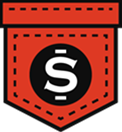Top 3 Methods for Printing to Blank T-Shirts

Need a t-shirt for a softball team? A company picnic? A family vacation? Printing on blank t-shirts is easy, personal and unique. Printing can be done on a variety of t-shirts: Gildan G500, Fruit of the Loom 3930 and 3931, Anvil 779, Hanes 5280, and Jerzees 363. A variety of options are available to print a design on a t-shirt, including direct to garment printing, heat transfer, and screen printing.
Direct to garment (DTG) printing uses inkjet printing processes to transfer an image to a blank t-shirt. Typically, direct to garment printers are made from standard inkjet printers by modifying the paper tray to accommodate garments. When blank t-shirts have been printed on using a DTG, the image feels particularly smooth. Another advantage is that DTG printing offers a wide variety of colors and quick production time. DTG printers, however, are expensive, perhaps prohibitively so for small businesses. Because they are made from inkjet printers used to print on white paper, they do not typically print white ink necessary for dark shirts.
Heat transfer printing utilizes paper covered with a film called carrier paper to transfer the image to blank t-shirts. Carrier papers are printed using a standard inkjet printer or color copier and the unprinted portion is trimmed away. Pre-printed carrier papers are also available. A heat press is used to apply consistent heat and pressure to the carrier paper, which is placed face-down on the desired garment or item. A clothes iron may be adequate to apply heat, but the quality of the transfer may not be as high. Two types of heat transfers are available: platen type transfer presses and rotary drum presses. A platen press is best for customized individual products and the rotary drum press is best for mass printing jobs. Heat transfer ensures a clear image on a variety of mediums.
Screen printing is one of the most popular and easiest methods for printing on blank t-shirts. It is called screen printing because a stencil of the image is placed over a mesh screen. The screen is pressed on each t-shirt and a roller is moved over the screen to create the image. Screen printing produces a wider variety of vibrant colors than DTG printing or heat transfer printing.
Printing to blank t-shirts is a great way to create a customized product for a variety of uses including bachelor parties or fast-food restaurant uniforms. Direct to garment printing, heat transfer and screen printing are the top three printing methods, and each has its own advantages and disadvantages. It is important to consider the quantity of items being printed, the desired image quality and the cost of each method.









